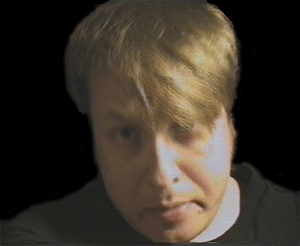
"Two roads diverged in a yellow road
And sorry I could not travel both.
...
I took the one less travelled by.
And that has made all the difference."
-Robert Frost
"Why wouldn't you do a film of me and my sister?", proposed Lee Bouvier (who was a member of the Bouvier family, part of the American "aristocracy" or pseudo-royalty) to the documentary film maker brothers Albert and David Maysles in the early 1970s. This said sister happened to be one Jacqueline (Bouvier) Kennedy Onassis, a.k.a. Jackie O., the widow of an assasinated President of the United States, now the wife to Greek billionaire Aristoteles Onassis.
The Maysles brothers pondered this offer for a while, but, to the horror of Lee and Jackie, ended up filming the lives of their aunt Edith and their cousin Edie, a mother and daughter living in a crumbling 28-room mansion called Grey Gardens in East Hampton, Long Island, a summer paradise for the rich.
Grey Gardens had reached a notorious reputation in newspapers when local officials had declared the decaying mansion a health risk, where the eccentric pair Edith Bouvier Beale (1894-1976), nearing 80, and her 56-year old daughter Edie (1917-2002) lived amidst the squalor with cats and raccoons.
Grey Gardens was raided and nearly condemned by the local government, when Jackie Onassis herself intervented and promised to take care of the cleaning up and renovation of the mansion. Following this, the majority of the film Grey Gardens (1975) -- recently shown on Finnish TV2 -- following the daily lives of Edith and Edie was shot in a six week period and cut together from 70 hours of material.
The Maysles brothers represented "Direct Cinema", an American variation of French cinema verité -- and an obvious predecessor to today's "reality TV" -- where the basic goal was authenticity and presenting everything "as it was". Their best known earlier works had been Salesman (1969), following the life of a Bible salesman, and Gimme Shelter (1970), a documentary of the Rolling Stones' ill-fated Altamont concert in December 1969.
This film is touching in all its funny and sad parts following each other. These are American trash glamour characters familiar from Andy Warhol's and John Waters' films, though we are talking about real, living people here, not any seedy caricatures. Sometimes it all looks like a piece of psychodrama or even absurd theatre, with characters exchanging non-sequiturs or talking all the time over each other, and constantly bickering. They browse old family albums, listen to 1930s shellac records or to a radioshow with a weird preacher, eat ice cream, and keep picking on each other and playing mind games. Edie feeds toast to the raccoons living in their attic, while her queen mother Edith stays in her bed surrounded by cats, trying on summer hats. And talking about men all the time, of course: husbands who ran away, lackeys, lovers spurned, Edie's would-have-been lovers who were allegedly chased away by her mother, which Edie is still bitter about.
Along the years, this film has gathered for itself a campy cult following, though behind the kooky, trashy surface I think there can be found a serious, multi-faceted study on the passing of time and the human situation. There are so many unanswered questions here, after all; why did the women end up living in this messy mansion all alone, was it an outcome of some series of tragic events the film only hints at...?
Still, Edie and Edith are not total recluses; they host a modest 79th birthday party for Edith, they employ a black gardener, and they are often visited by Jerry, a young handyman whom Edie calls "the Marble Faun," after the Nathaniel Hawthorne story. Edith thinks Marble Faun -- though over thirty years younger than her daughter -- fancies Edie, but Edie finds it hard to disguise her suspicion for the boy, obviously jealous for the attention her mother shows for this young, raggedy, long-haired drifter.
It is the artistic, Robert Frost-quoting homemade diva Edie, a self-described s-t-a-u-n-c-h character -- in whom the outsider art ethos seems to be personifying -- who steals the show here; in fact, the film eventually made a cult figure out of her. The outsider fashion guru Edie's (she used to be an aspiring actress and ex-model, after all) garderobe seems to be endless, when she runs her own private fashion show for the camera: among them, a clingy brown turtleneck, scarves, a pair of sun pants pinned around her waist as a makeshift skirt and something resembling a sheer nun's wimple on her head. Inspired by Edie, photographer Steven Meisel shot a fashion pictorial for Italian Vogue in 1999, featuring an image on the magazine's cover of a model decked out in Edie's signature "revolutionary costume" of a sweater wrapped around her head, tacked in place by an ornate brooch.
Edie is a like a little child who obviously has never had a chance to grow up in the shadow of her dominating mother Edith, who seems to treat Edie as her servant; their relationship seems to be both symbiotic and short of sadomasochistic. This is apparent every time Edie tries to draw all attention to herself, in turns flirting with the Maysles brothers behind camera, teasing, dancing, posing, and trying to wind her mother up the best she can. She compensates for her unrealised dreams by living in a vivid make-believe world or in memories or fantasies of what it could have been: "It's very difficult to keep the line between the past and the present". Edith and Edie seem both prefer their past to the reality where they find themselves now.
Grey Gardens: a tribute site
Some stills
Goddess Edie
An article about the Maysles brothers
IMDB entry


No comments:
Post a Comment